GDES Students Present Biodesign Projects in NYC
A meal made from invasive aquatic species and a lantern made from cypress needles—that’s what Auburn Graphic Design students presented to designers and scientists as finalists in a recent international conference.
Five students from the School of Industrial and Graphic Design (SIGD) traveled to New York City in June to present work to academics and industry professionals in design, art and biology at the 10th annual student Biodesign Challenge Summit.
Two teams represented Auburn University amongst over 50 finalist teams from 20 different countries at the event that combined design and science. The projects were a result of SIGD Assistant Professor Devon Ward’s Biodesign: Gulf Coast Design Stories course, in which students explored biomaterials and biodegradable solutions for experimental concepts that support Gulf Coast resiliency.
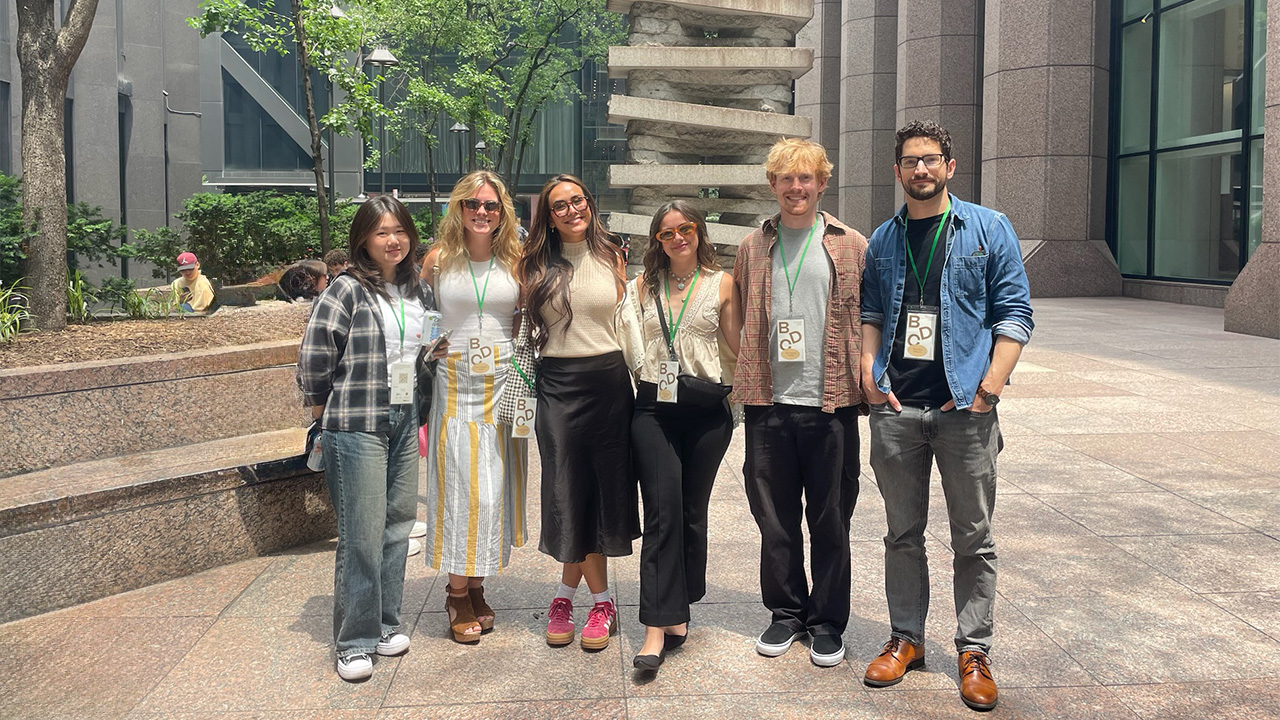
“This was a great opportunity for our students to get hands-on experience creating design projects that can help build a better future,” Ward said, noting that the students spent the Spring 2025 semester developing the prototypes they presented to experts in the arts, design, history and science at the Challenge.
Food for Thought
Graphic Design (GDES) students Yeeun Cho and Olivia Herring presented “Wild Alchemy,” a food truck concept in Mobile, Alabama, that serves food focused on three ecological dishes that tell a story about the area’s past, present and future. The project was developed with GDES students Maria Rumore, Tabatha Tolbert and Cecilia Hoffpauir, who were unable to attend the conference.
The Wild Harmony appetizer was grilled oysters on wild rice crackers—the rice is historically cultivated by the Choctaw and Creek peoples. The Wild Imbalance entrée was a lionfish cake, made with an invasive species causing ecological damage throughout the Gulf Coast. The dish promotes the “Eat ‘em to Beat ‘em” campaign to create a food source that addresses overpopulation. Finally, the Wild Admonition dessert was vanilla ice cream topped with chocolate and strawberry pearls, representing the eggs of the apple snail, another invasive species impacting coastal ecology.
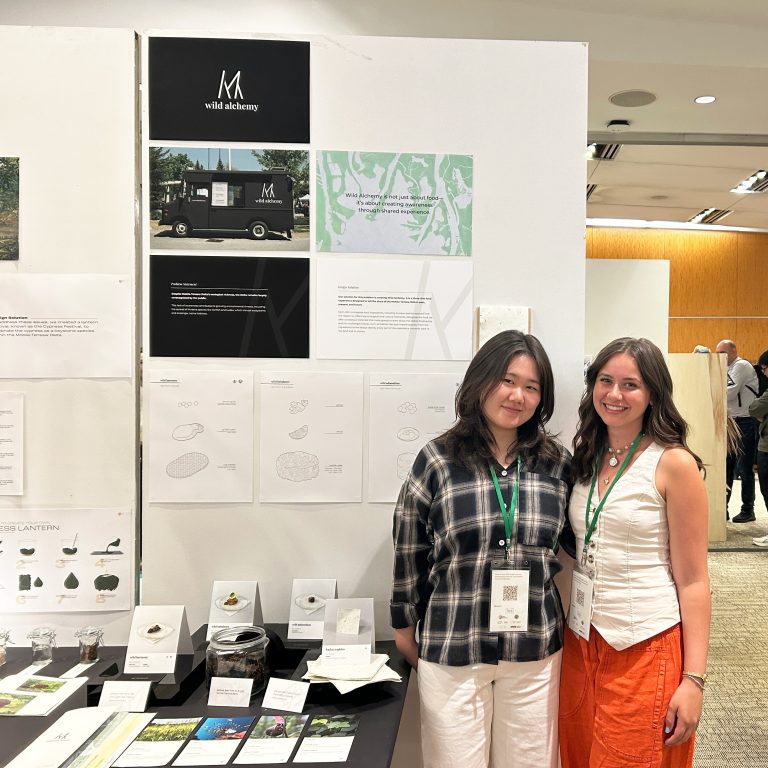
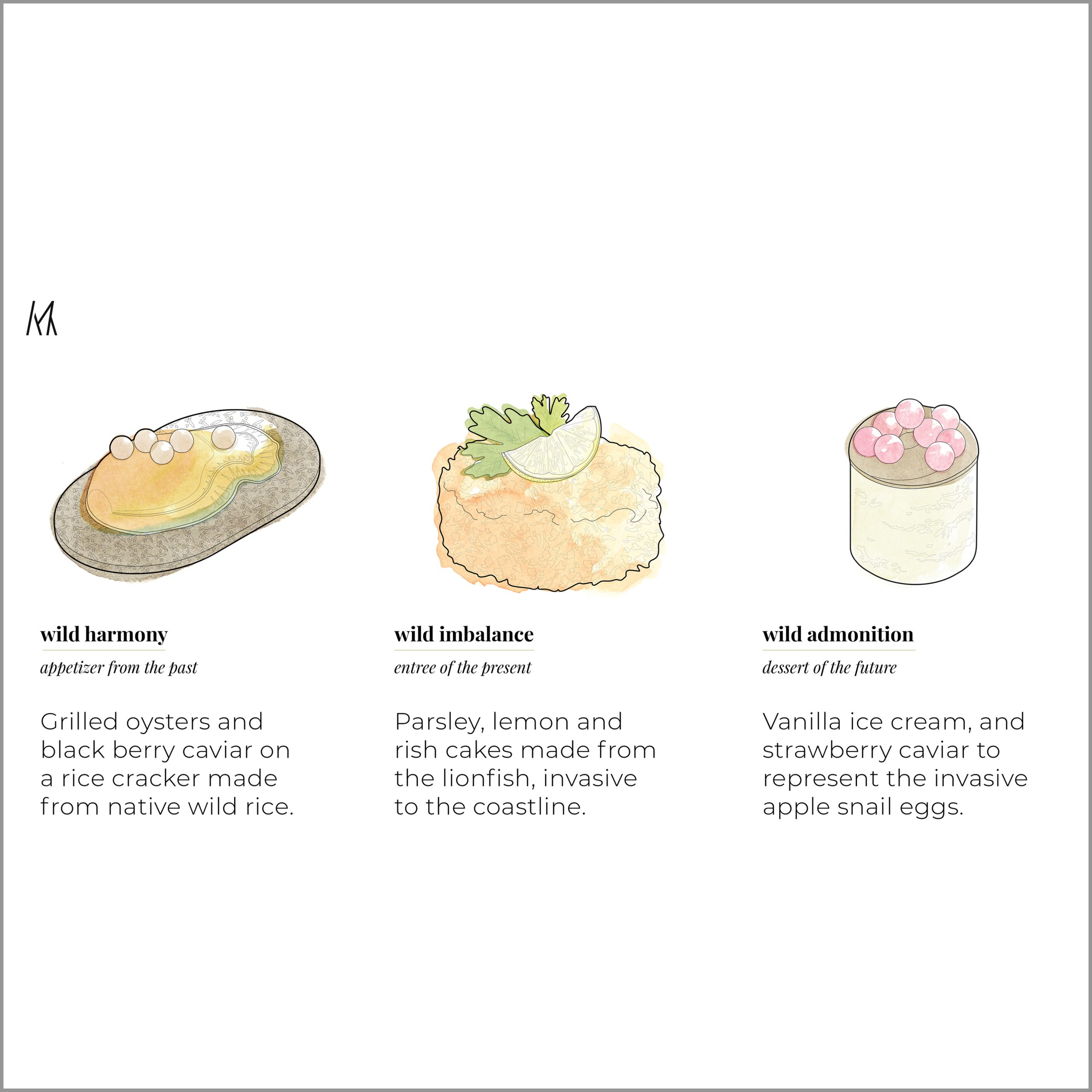
The final element of “Wild Alchemy” was a napkin made from the invasive kudzu plant, transforming an ecological threat into a functional object. In addition to testing recipes throughout the spring and designing the visual identity, the team was awarded the studio prize at Auburn’s Kaleidoscope Design Show.
“Biodesign Challenge 2025 was more than just showcasing our design–it was an opportunity to communicate our ideas, gather feedback, and learn from others in the field,” Cho said. “The experience meant a lot to me because it broadened my perspective as a designer.”
Illuminating bioplastics
A second group—composed of GDES students Sarrina Muehleisen, Lavens Maginnis, Nick Patterson and Olivia Herring—presented “Cypress Festival: Shining Light on the Delta,” a lantern festival concept in Mobile’s Blakely State Park.
In their project, the team worked to showcase the role the Bald Cypress has in sheltering animals and cleaning rivers in the Mobile-Tensaw Delta. The speculative festival concept brings people together to highlight the ecological urgency of preserving the trees. The festival centers around lanterns created with bioplastics made from cypress needles.

“My favorite part about participating in this challenge was the process of learning and creating something for a cause,” Patterson said, commenting on the role of Biodesign in fostering a more sustainable future.
Following their presentation, other participants from the Biodesign Challenge came to congratulate the team and share praise.
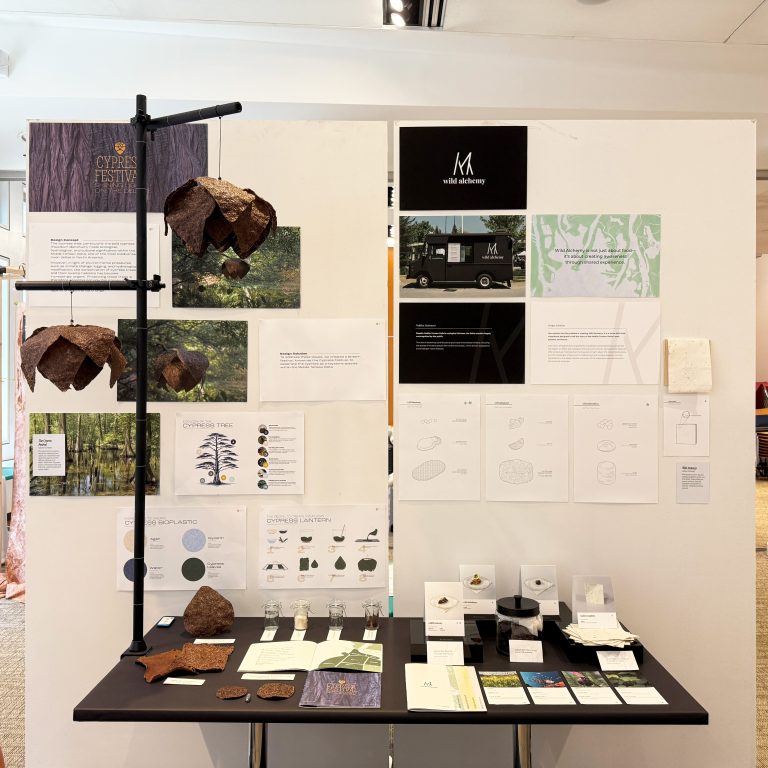
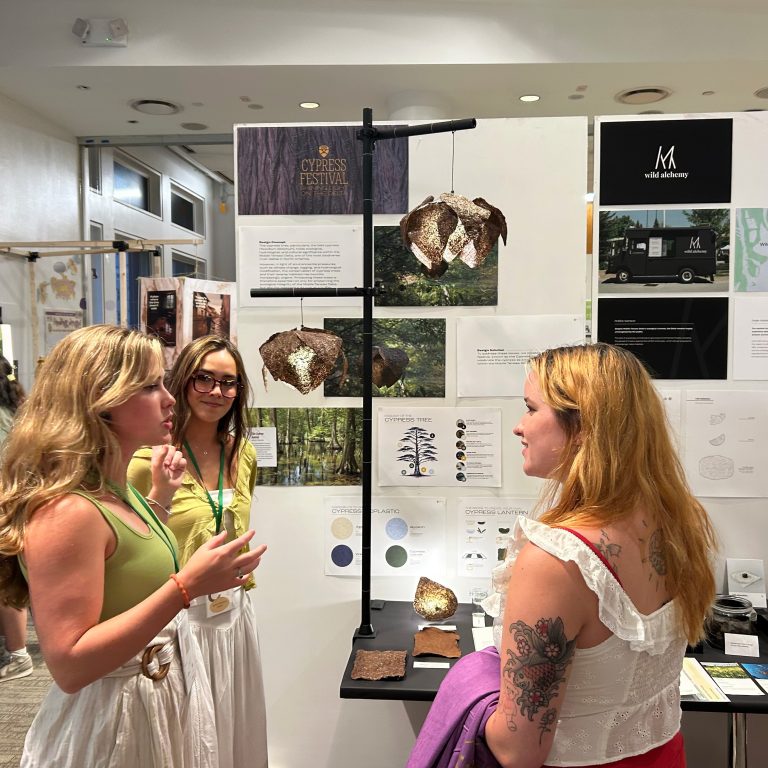
“Though presenting our project was really nerve wracking, I liked getting to see how people loved our lantern,” Maginnis said. “It was super encouraging to be validated in our work by other great designers and scientists.”
Ward noted that both projects were excellent examples of creative problem solving, saying “the students took very complex topics and made them relatable and compelling.”
Following the leaders
In addition to presenting their work, the students also heard from speakers from a wide range of fields, including their own professor. Ward gave the closing keynote address for the Biodesign Symposium. In the forum for biodesign educators that ran alongside the Challenge, he shared outcomes from the last 10 years of teaching biodesign courses.
Another notable expert was Biodesign Challenge keynote speaker Eben Bayer, the CEO and founder of Ecovative, a company working to grow sustainable alternatives to plastics, polystyrene foam, building materials and animal-based food products.

The Biodesign Challenge allowed the student teams to gain experience presenting their work, confidence in their designs and exposure to a manifest of professionals working to improve the planet.
“It was an amazing experience to travel to New York and an honor to be able to represent Auburn University, and more specifically SIGD, on this trip,” Muehleisen said. “Seeing what is being accomplished in the field of Biodesign is inspiring.”
See more in:
Creative Work,
Faculty Recognition,
Industry Recognition,
Research,
Student Competitions,
Student Experience,
Student Recognition,
Student Work
Related people:
Devon Ward